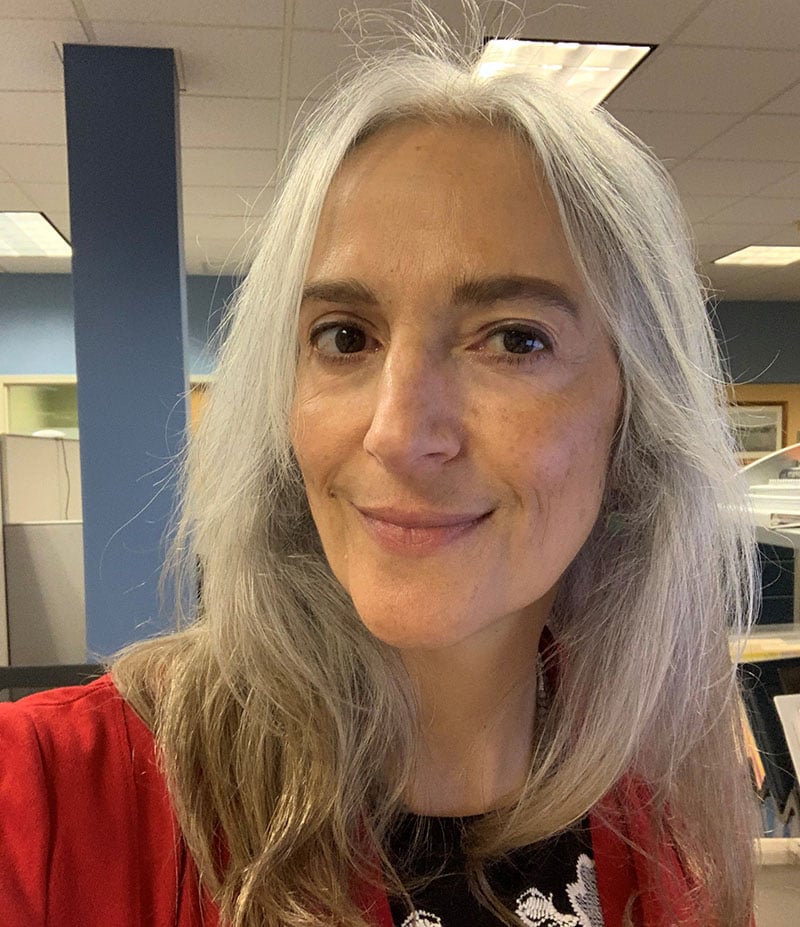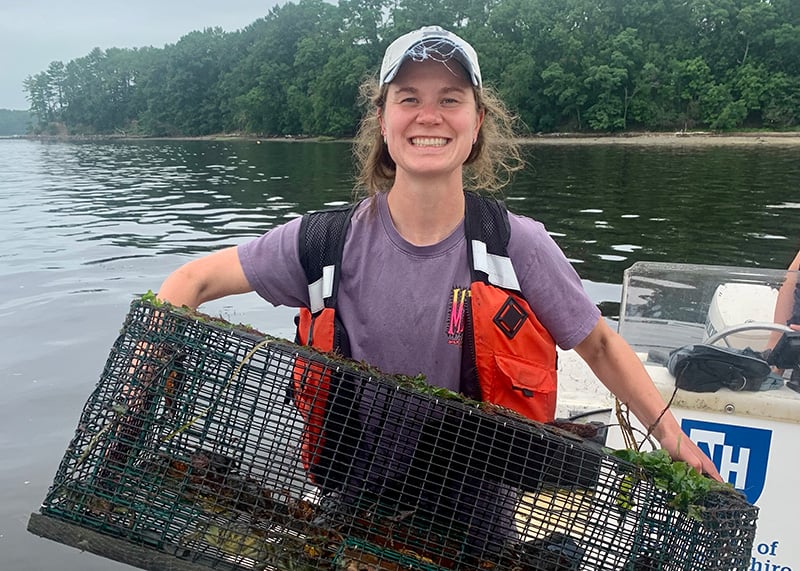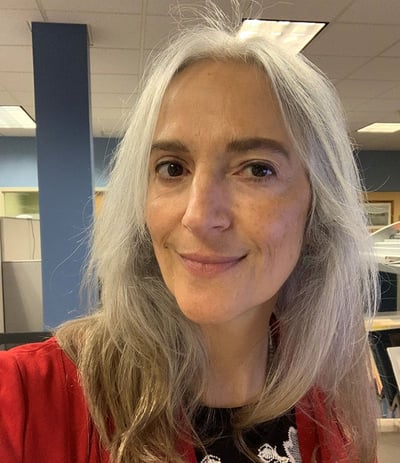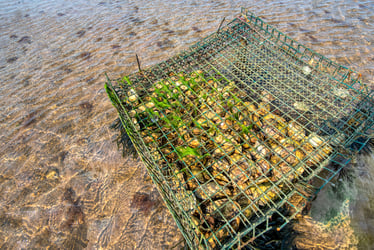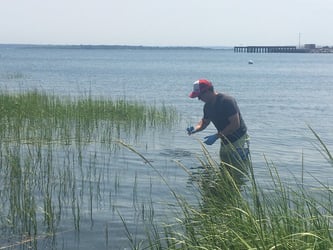We recently connected with Kelsey Meyer, the recipient of the 2022-23 FlowCam Aquatic Research Grant for Graduate Students. Kelsey is a Ph.D. candidate studying marine biology at the University of New Hampshire (UNH) College of Life Sciences and Agriculture.
Kelsey oversees Dr. Brown's lab field sampling efforts, including taking samples from Great Bay Estuary (GBE) in southeastern New Hampshire. Specifically, her Ph.D. research aims to determine the extent to which green crabs are predators of oysters and, if so, at what specific life stages for each species. Kelsey used a FlowCam 8100 instrument (provided via the grant) to help speed up analysis during the summer of 2022.
A highly successful equipment grant program, the FlowCam Aquatic Research Grant offers students and faculty members an opportunity to use FlowCam in their lab for a full semester. We have categories for graduate students and undergraduate faculty members.
Her work has provided much-needed demographic data on linkages among physicochemical and biotic factors affecting crabs and oysters. In 2021, she successfully completed the first Great Bay Estuary green crab survey in nearly 10 years. Over the past several years, she has worked with the NH Shellfish Farmers initiative, a group of oyster growers. Kelsey used FlowCam to help map the abundance and distribution of both green crab and oyster larvae in the GBE. Analyzing water samples with FlowCam provided data on both types of larvae, when they first appear in the water column, when they co-occur, and whether crab larvae might be a significant predator of oyster larvae.
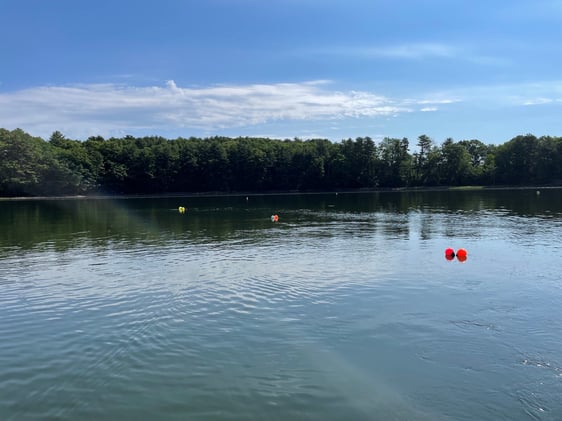
Crab trap buoys at a sampling site in Great Bay Estuary
FlowCam helped identify oyster larvae at different life stages and determine abundance and distribution from various sampling sites. The larvae were tested for organisms that cause MSX, one of the most prevalent oyster diseases, for which there is little known data about transmission methods. This study will help document disease transmission and dynamics of MSX in eastern oysters.
The Eastern Oyster, Crassostrea virginica, is an important ecological driver in many bodies of water through habitat creation and water filtration. They have been a critically important species in many estuaries like the GBE. However, their populations are in decline. The Brown Lab hypothesizes that green crab predation, disease, and microplastics are all negative factors contributing to the decline of Eastern Oysters in the GBE.
 FlowCam images of larval oysters
FlowCam images of larval oysters
Download the App Note for Shellfish Aquaculture
European Green Crabs, Carcinus maenas, commonly known as green crabs, are an invasive species that have been shown to significantly alter natural community structure in coastal ecosystems. Mounting evidence demonstrates that these crabs have reduced populations of native clams, scallops, and quahogs.
 FlowCam images of crab zoea (Carcinus Maenas)
FlowCam images of crab zoea (Carcinus Maenas)
The FlowCam Aquatic Research Grant is awarded annually to two recipients: a graduate-level researcher and an undergraduate faculty member to enrich a particular course or to support a student doing independent research. The winners each receive a FlowCam to use for up to 4 months, plus remote training, technical support, software licenses, and funding to present at a major scientific conference.
We had an opportunity to speak with Kelsey about her experience working with FlowCam:
FlowCam: Has FlowCam improved your research and workflow? If so, how?
Kelsey: FlowCam has helped immensely with our time efficiency, reliability, and validity of counting larvae. Before FlowCam, we had to count oyster and crab larvae under a microscope, which was tedious and difficult. It was easy to lose track of what had already been counted, and discrepancies would occur. With FlowCam, we didn’t worry about double-counting.
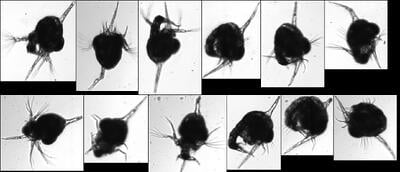 FlowCam Images of crab zoea (Carcinus Maenas)
FlowCam Images of crab zoea (Carcinus Maenas)
FlowCam: How do you plan to use your data?
Kelsey: The data will help provide a context for seasonal fluctuations in oyster and crab larvae. We’ll be able to compare multiple years and use both temporal and spatial data while studying the abundance and distribution of larvae over space and time. The data proves that oyster populations are declining in Great Bay, and we can now advocate for oyster restoration projects. Another part of my research targeted invasive crab species; now, I know when and where they spawn.
FlowCam: What challenges did you overcome during this semester?
Kelsey: The turbidity in the Great Bay Estuary is a major factor in the collection and running of water samples. We encountered some debris that would cause the flow cell to become clogged, emphasizing the importance of cleaning and filtering the sample before running it.
FlowCam: Are there any training tools or resources you particularly liked or wished you had?
Kelsey: The modules for FlowCam University were very helpful. Some videos demonstrated how to unclog and change a flow cell, which proved to be very useful, especially given the nature of our water samples.
FlowCam: What do you see as the single biggest advantage of FlowCam?
Kelsey: FlowCam offered us a reliable and objective means of counting cells and particles in our water samples. It was great to be able to pinpoint both oyster and crab larvae. We created libraries and set up a classification scheme to automatically identify and count oyster and crab larvae, and having FlowCam provide this data objectively was fantastic.
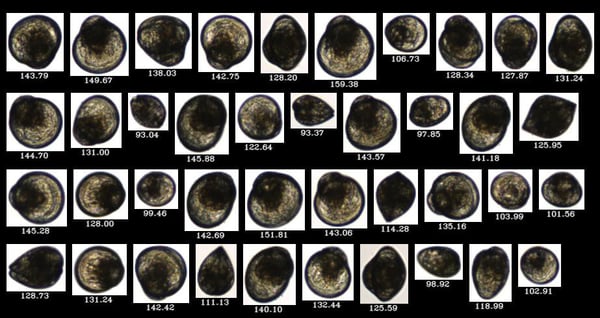 FlowCam images of larval oysters
FlowCam images of larval oysters
Interested in learning more about how FlowCam can support shellfish research and aquaculture?







